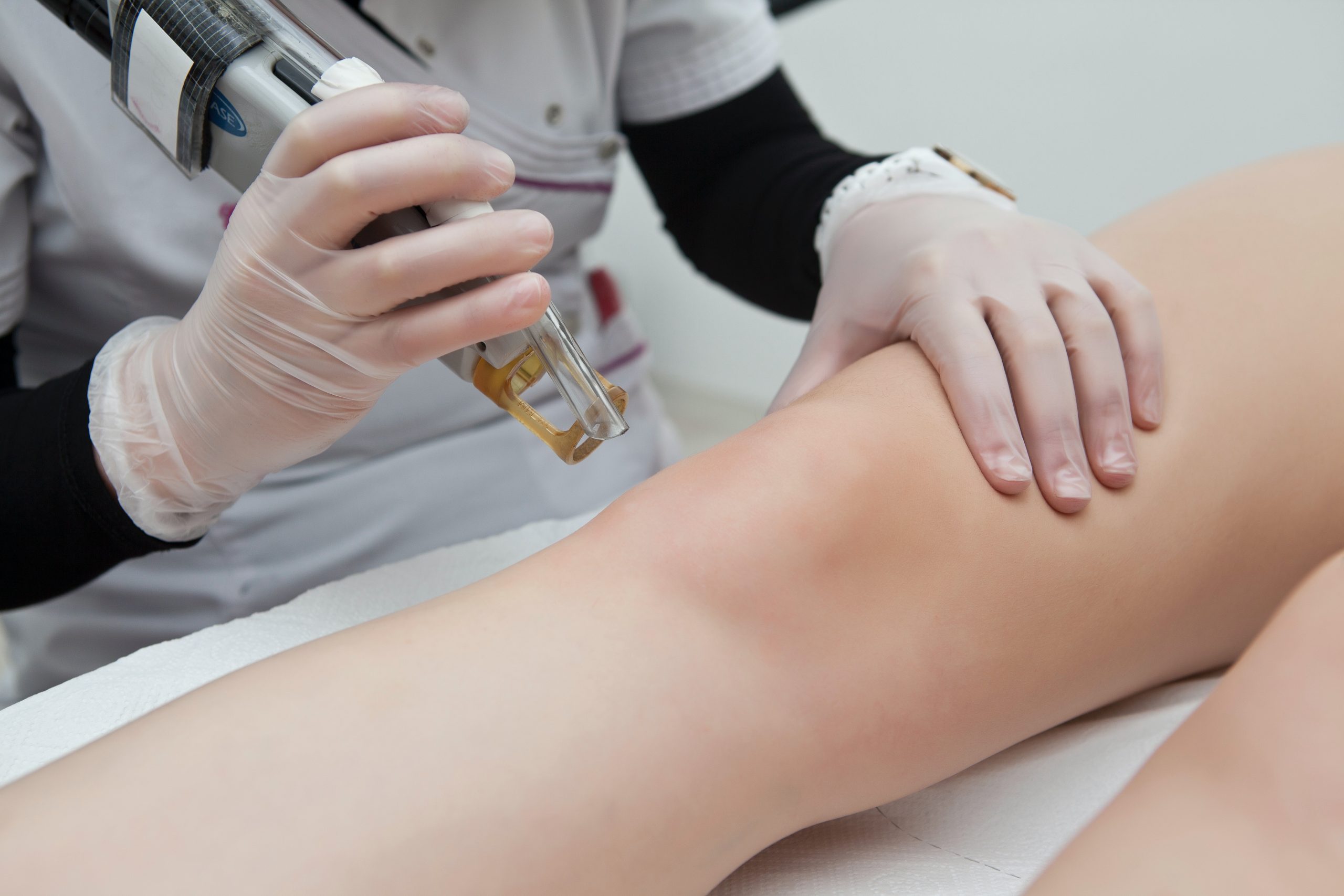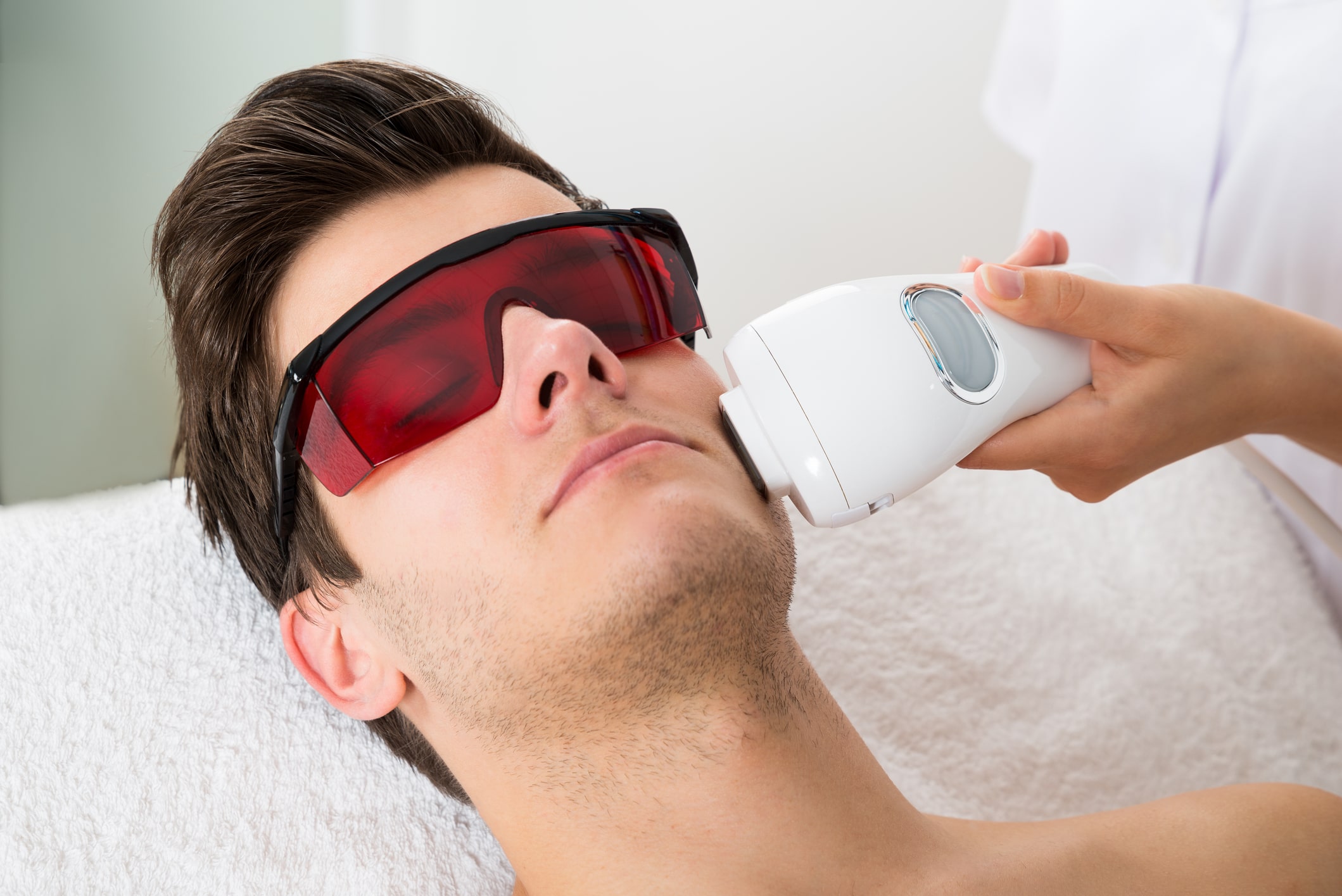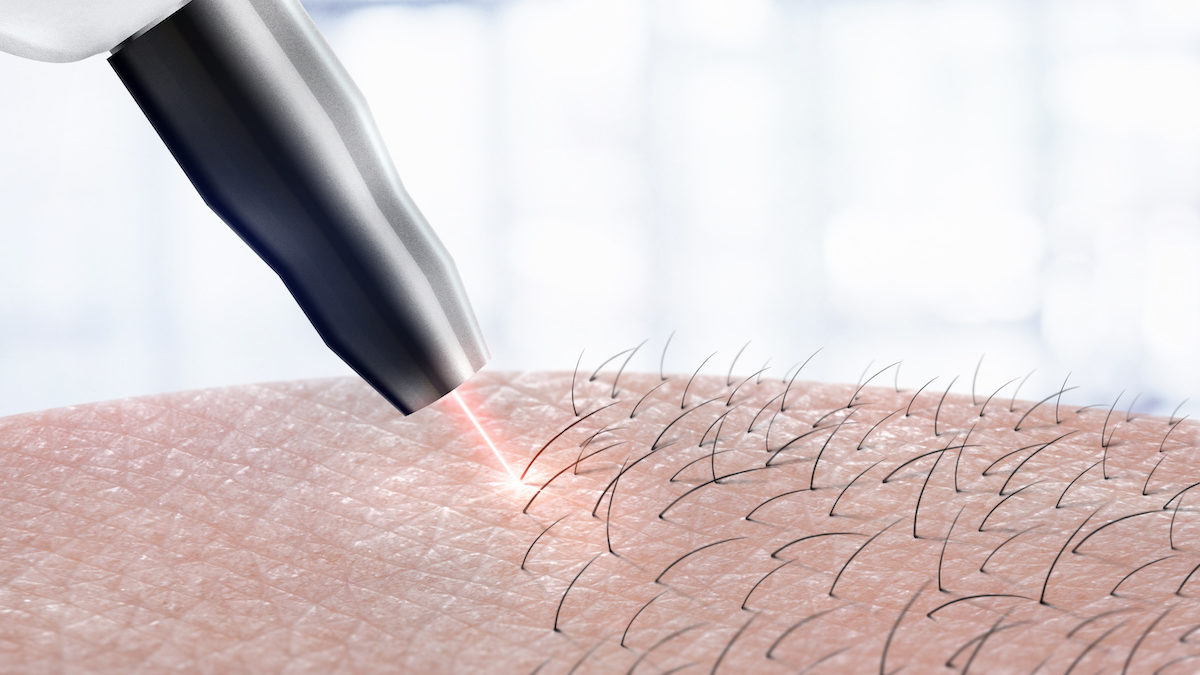

FAQs
When Does Hair Fall Out After Laser Hair Removal
Modified: September 23, 2023
Get answers to common questions about laser hair removal and find out when you can expect the hair to fall out.
(Many of the links in this article redirect to a specific reviewed product. Your purchase of these products through affiliate links helps to generate commission for Under-tec.com, at no extra cost. Learn more)
Table of Contents
Introduction
Laser hair removal is a popular cosmetic procedure that offers long-term hair reduction by targeting the hair follicles with concentrated laser beams. It is a non-invasive and effective way to remove unwanted hair from various areas of the body, including the face, legs, arms, underarms, and bikini line. Before undergoing laser hair removal, it is important to have a clear understanding of the process and what to expect, particularly when it comes to hair loss.
Many people considering laser hair removal wonder when exactly their treated hairs will start to fall out. While there is no definite answer as each individual’s experience may vary, there are some general guidelines that can help provide an idea of the hair loss timeline. Additionally, certain factors can influence the timing of hair loss after laser hair removal. This article will explore how laser hair removal works, the factors that affect hair loss, and provide an overview of the typical hair loss timeline after laser hair removal.
By gaining a better understanding of the hair loss process, individuals can have realistic expectations and make informed decisions about their laser hair removal journey. Furthermore, we will share some tips to promote hair regrowth after laser hair removal, to ensure that your treated areas recover and look their best.
How Does Laser Hair Removal Work?
Laser hair removal works by targeting the melanin pigment in the hair follicles. The melanin absorbs the laser energy, which then transforms into heat. This heat damages the hair follicle, inhibiting future hair growth.
During the procedure, a handheld device is used to deliver the laser beams to the targeted area. The laser has a specific wavelength that is attracted to the melanin in the hair. This means that laser hair removal is most effective on individuals with dark, coarse hair and fair skin, as there is a greater contrast between the melanin in the hair and the skin.
As the laser is applied to the skin, it gradually destroys the hair follicles, leading to a reduction in hair growth. However, it’s important to note that laser hair removal does not provide permanent hair removal. Instead, it offers long-term hair reduction, meaning that some hair follicles may still produce hair after the treatment, but the hair will be finer, lighter, and less noticeable.
Laser hair removal is a safe and controlled procedure when performed by a trained professional. The number of sessions required can vary depending on factors such as the individual’s hair type, skin tone, and the area being treated. Most individuals require multiple sessions spaced several weeks apart to target all the hair follicles during their active growth phase.
It’s crucial to choose a reputable and experienced provider for laser hair removal to ensure both safety and effective results. During the initial consultation, the specialist will examine your skin and hair, provide realistic expectations based on your unique circumstances, and tailor a customized treatment plan to achieve optimal results.
Now that we understand how laser hair removal works, let’s explore the factors that can influence the timeline of hair loss after the procedure.
Factors Affecting Hair Loss Timeline
The timeline of hair loss after laser hair removal can vary from person to person and is influenced by several factors. It’s important to keep these factors in mind to manage your expectations regarding when you can expect to see results. Here are some of the main factors that can affect the hair loss timeline:
- Hair and skin color: The contrast between the color of your hair and skin can have a significant impact on the effectiveness and timeline of hair loss. Laser hair removal is most effective on individuals with dark, coarse hair and fair skin, as the laser can more easily target the melanin in the hair follicles while minimizing the risk of damaging the surrounding skin. Individuals with lighter hair colors, such as blonde or red, may require additional sessions to achieve desired results.
- Hormonal factors: Hormonal fluctuations can affect the hair growth cycle and influence the timeline of hair loss after laser hair removal. Hormonal changes caused by pregnancy, menopause, or polycystic ovary syndrome (PCOS) can prolong the hair growth phase, leading to delayed hair loss. It’s essential to discuss any hormonal conditions or medication use with your laser hair removal specialist to determine the best approach for treatment.
- Area being treated: The area being treated can also impact the hair loss timeline. Some areas, such as the legs, may respond more quickly to laser hair removal compared to other areas like facial hair or bikini line. This is because the hair growth cycle and density can vary in different areas of the body.
- Number of sessions: The number of laser hair removal sessions you undergo can influence the timeline of hair loss. Since hair grows in different phases, multiple sessions are necessary to target all the follicles during their active growth phase. Typically, a series of four to six sessions is recommended for optimal results, with each session being spaced several weeks apart.
- Individual hair growth cycle: Each individual’s hair growth cycle is unique and can affect when hair loss occurs after laser hair removal. Typically, you can expect to see gradual hair reduction starting a few weeks after the first session. However, hair growth cycles can vary, and it might take several sessions before you notice significant hair loss.
Understanding these factors can help you manage your expectations and have a more accurate understanding of when you can expect to see hair loss after laser hair removal. However, it’s important to consult with a professional who can assess your specific situation and provide personalized guidance.
Typical Hair Loss Timeline After Laser Hair Removal
The hair loss timeline after laser hair removal can vary among individuals, but there is a general pattern that many people experience. It’s important to note that this timeline is not set in stone and can vary depending on factors such as hair and skin color, the area being treated, and individual hair growth cycles. However, understanding the typical hair loss timeline can help set reasonable expectations. Here is a general overview:
- Immediate effects: After each laser hair removal session, you may notice some immediate effects. These can include mild redness, swelling, or a sunburn-like sensation in the treated area. These effects are temporary and should resolve within a few hours to a few days.
- Initial shedding: In the weeks following the first laser hair removal session, you may start to notice some hair shedding. This is usually a sign that the treatment is working. The shed hairs will typically be in the telogen (resting) phase of the hair growth cycle.
- Gradual hair reduction: As you progress through your laser hair removal sessions, you will likely experience gradual hair reduction. The treated hairs will become finer, lighter in color, and less noticeable. The rate of hair reduction can vary between individuals but is usually noticeable within a few weeks to a couple of months.
- Complete hair loss: After multiple laser hair removal sessions, you can expect to see a significant reduction in hair growth in the treated area. The targeted hair follicles will be damaged, inhibiting future hair growth. However, it’s important to note that some hair follicles may still produce hair, but this hair will be much finer and less noticeable.
It’s important to remember that laser hair removal requires multiple sessions to target all the hair follicles during their active growth phase. Each session helps to gradually destroy more hair follicles, leading to increased hair reduction. Therefore, it’s crucial to complete the recommended number of sessions to achieve optimal results.
Additionally, it’s essential to follow the post-treatment care instructions provided by your specialist. This may include avoiding sun exposure, using sunscreen, and refraining from tweezing or waxing the treated area, as these activities can interfere with the hair follicles’ removal process.
Keep in mind that every individual’s response to laser hair removal can differ, and some may experience faster or slower hair loss. It’s best to consult with a qualified professional who can assess your specific circumstances and guide you through the process.
Tips to Promote Hair Regrowth After Laser Hair Removal
While laser hair removal aims to reduce unwanted hair, it’s important to note that it does not guarantee permanent hair removal. Some hair follicles may still produce hair, although it will be finer and less noticeable. If you’re looking to promote hair regrowth after laser hair removal, here are some helpful tips:
- Be patient: Hair regrowth takes time, so it’s important to be patient and allow your body to go through its natural hair growth cycle. It may take several months for significant regrowth to occur.
- Maintain a healthy lifestyle: A healthy diet and lifestyle can promote hair growth. Ensure you’re consuming a balanced diet rich in vitamins, minerals, and proteins that support hair health. Stay hydrated, exercise regularly, and manage stress levels, as these factors can also impact hair growth.
- Avoid additional hair removal methods: Refrain from using other hair removal methods such as waxing, tweezing, or threading in the treated area. These methods can disrupt the hair growth cycle and interfere with the regrowth process.
- Protect your skin: Shielding your skin from excessive sun exposure is crucial for promoting healthy hair regrowth. Use sunscreen with a high SPF and apply it generously to the treated area. Excessive sun exposure can damage the skin and potentially hinder hair regrowth.
- Follow post-treatment care instructions: Adhere to the post-treatment care instructions provided by your specialist. This may include avoiding hot showers, steam rooms, or saunas for a few days after the procedure. These precautions help protect the treated skin and promote a healthy regrowth environment.
- Stay in touch with your specialist: Keep in touch with your laser hair removal specialist and schedule follow-up appointments as needed. They can monitor your progress, assess any concerns, and provide additional guidance for promoting hair regrowth.
Remember, the goal of laser hair removal is to reduce hair growth and improve the overall appearance of the treated area. While some hair regrowth is expected, it will be significantly less noticeable than before. By following these tips and maintaining a healthy lifestyle, you can support optimal hair regrowth after laser hair removal.
Conclusion
Laser hair removal is an effective cosmetic procedure for long-term hair reduction. Understanding the timeline of hair loss after laser hair removal and the factors that can influence it can help manage expectations and ensure an optimal outcome.
During laser hair removal, the laser targets the melanin in the hair follicles, damaging them and inhibiting future hair growth. The hair loss timeline typically includes immediate effects, initial shedding, gradual hair reduction, and ultimately, reduced hair growth in the treated area.
Factors such as hair and skin color, hormonal influences, the area being treated, and the individual’s hair growth cycle can all impact the hair loss timeline after laser hair removal. It’s important to consult with a professional provider to assess your unique situation and tailor a treatment plan accordingly.
Promoting hair regrowth after laser hair removal can be achieved by practicing patience, maintaining a healthy lifestyle, avoiding additional hair removal methods, protecting the skin from sun exposure, following post-treatment care instructions, and staying in touch with your specialist.
By following these guidelines and having realistic expectations, individuals can optimize their laser hair removal experience and achieve long-term hair reduction with minimal hair regrowth. If you have any concerns or questions, it’s always best to consult with a qualified laser hair removal specialist who can provide personalized guidance and support throughout your journey.









